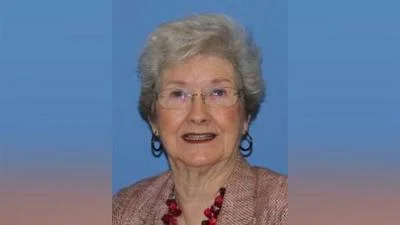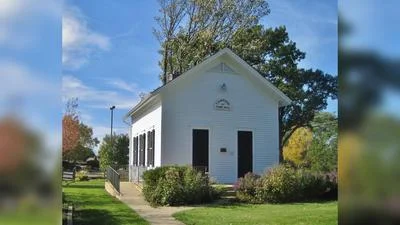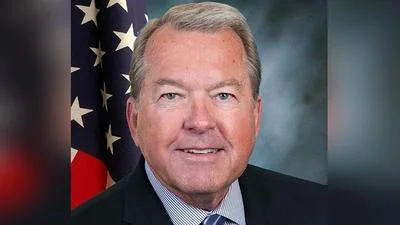A joint meeting of the St. Charles Tree Commission, Batavia Tree Commission and Geneva Natural Resources Commission was held Thursday, Oct. 20 to discuss urban forestry.
Here are the minutes as provided by the commissions:
MINUTES
JOINT MEETING
St. Charles Tree Commission
Batavia Tree Commission
Geneva Natural Resources Committee
October 20, 2016
Note: These Minutes are not a verbatim transcription of statements made during this meeting. The Minutes are intended to provide an official record of meeting actions and an overview of topics discussed.
Prior to the call to order, a light dinner was served to all present beginning at 5:30 p.m. St. Charles Tree Commission
Members Present: Chair. Ralph Grathoff, Valerie Blaine, Kathy Brens, Raymond Hauser, Suzy Myers, Pam Otto, Ron Ziegler
Members Absent: Jon Duerr, Caroline Wilfong
Others Present: Jeremy Craft, AJ Reineking, Lisa Vielbig
Visitors Present: Phil Graf and Steve Lane of Graf Tree Care
Batavia Tree Commission
Members Present: Chair. Scott Haines, John Higgins, Gary Holm, Bob Lootens, Frank Saupp, Kevin Summers, Kathy Vranek
Members Absent: None
Geneva Natural Resources Committee
Members Present: Chair. Jay Womack, Tom Dickinson, Laura Jennison, Steve Matravers
Members Absent: Jeanine McMillen
1. Call to Order
The meeting was convened by Chair. Grathoff at 6:05 p.m. at Creek Bend Nature Center, 37W700 Dean Street, St. Charles, IL.
2. Introductions
Mr. Reineking asked all present to introduce themselves.
3. Background and History of Creek Bend Nature Center
Comm. Blaine offered a brief background of the facility, as well as some of the services/programs available. She also encouraged a group tour of the facility. Chair. Grathoff thanked Comm. Blaine for hosting the meeting at such a beautiful location.
4. Presentation on Urban Forestry
Comm. Blaine discussed the Big Tree program that was created for Kane County. The goal of this program is to get people outdoors to look at trees. Kane County provides training on how to
measure trees, with each tree receiving a point value based on its measurements. Each species will then have a ‘champion’ tree based on those measurements. Trees can be on private or public property.
Comm. Blaine presented a video outlining Urban Forestry within Kane County over the years. Included in the presentation was information regarding:
The effects on trees by outside forces
Different types of wooded communities:
Forests – > 80% canopy cover. East side of the Fox River has more of this type of community as fires were stopped by the river.
Woodlands – Plant communities with 30-80% canopy cover. Woodlands are becoming more difficult to find.
Savannahs – Plant communities with 10-30% canopy cover. Very few original savannahs remain.
The importance of soil quality on trees. Often what you don’t see is even more important than what you do see when it comes to trees.
Forest area changes in Illinois. From 1962 to 1985, the wooded area increased due to an increase of trees planted in urban areas.
Invasive species are preventing rejuvenation of Oak woodlands. Invasive species are categorized as plants not originally in the area and not part of the ecosystem. Another problem for the Oaks is White Tail Deer that eat Oak seedlings.
Oak woodlands are in great danger of extinction. There are restoration projects in place in Kane County. Annually 2,000-8,000 Oak whips and 1,500-2,000 potted Oaks are planted.
5. St. Charles Urban Forestry Management Plan
Mr. Lane discussed the progress being made on the Urban Forestry Management Plan.
Goals – Working with the City of St. Charles Tree Commission to determine the City’s goals with regard to Urban Forestry. Intent for the document to be for both the City and the public to understand why work is being done, and how it relates to City ordinances.
This is a fluid document that can be changed as necessary.
Tree diversity breeds stability.
Constant management of tree inventory.
Risk management.
Incentive planting on private property a possibility?
Mr. Graf discussed the issue of canopy cover and how it’s shortage. As trees grow to 18” DBH and greater, the benefits of the trees are increased exponentially. Also discussed was the importance of caring for trees (training) when they are young to increase the chances of longevity.
6. Adjournment
Meeting was adjourned at 7:52 p.m.






 Alerts Sign-up
Alerts Sign-up